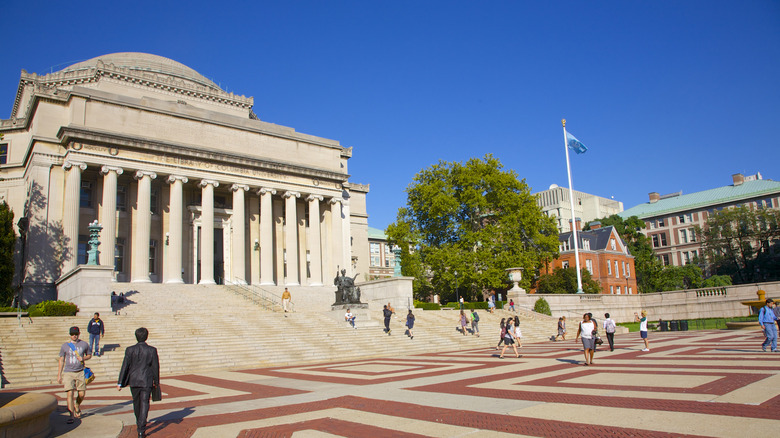The State Where You'll Find America's Most Expensive Colleges (It's On The East Coast)
The cost of higher education in the United States has skyrocketed over the past century, creating significant financial hurdles for many students and their support networks. As of 2024, the average annual tuition for an in-state public college is about $9,750, while out-of-state students pay approximately $28,400. For private, nonprofit institutions, the yearly cost is an eye-watering $58,000 on average. The average college student spends about $38,000 annually, including additional costs such as books, housing, and miscellaneous everyday expenses. Over four years, the total investment often reaches and exceeds six figures, a number that is hard to wrap your head around at the tender age of 18.
Rising costs are fueled by factors such as salaries, administrative expenses, campus maintenance, ever-increasing student demand, and the overall economic climate in the United States. Despite these challenges, higher education remains a significant pathway to career opportunities, prompting many students to rely on financial aid, scholarships, and loans. A recent study from The College Investor, a platform dedicated to helping students and families navigate education expenses and debt, revealed that New York is home to the highest concentration of America's most expensive colleges –– further underscoring the financial demands of pursuing a degree.
New York's elite (and costly) institutions
New York is home to six of the 30 most expensive colleges in the U.S. The study ranked colleges based primarily on published tuition fees. The average tuition for schools in this list exceeds $65,000 a year, with some topping $70,000. These figures exclude room and board as well as other living expenses, which can bring the total annual cost near $100,000. New York emerged as the state with the most entries, highlighting its concentration of prestigious, high-cost institutions.
Leading the list in New York is Columbia University, with an annual tuition of $68,400. Columbia is one of America's oldest colleges and a member of the Ivy League, known for its academic rigor and 5.5% acceptance rate. According to the Princeton Review, Columbia made the list of top "dream" colleges for students. Cornell University in Ithaca follows at $68,360. Another member of the Ivy League, Cornell was founded in 1865 and organized into seven different undergraduate colleges.
Other entries include Vassar College in Poughkeepsie, with a tuition of $66, 870, and Colgate University in Hamilton, with a tuition price tag of $69,292. Both are renowned for their liberal arts programs. Sarah Lawrence College in Yonkers, which began as a women's college in 1926, charges $66,292. Finally, the University of Rochester rounds out the group at $60,550 per year and stands out as one of the larger schools on the list, offering a wide array of programs. New York's elite colleges are known for their excellence and their price tags highlight the importance of financial planning when choosing an institution.
Strategies for making college affordable for students
While the cost of higher education may seem daunting, several strategies can help students manage expenses. Financial aid packages, including federal grants, scholarships, and work-study programs, often significantly reduce the out-of-pocket burden. Many institutions also offer merit-based scholarships or needs-based aid tailored to your individual circumstances. To apply, students can complete the Free Application for Federal Student Aid (FAFSA) as early as possible.
Community colleges offer another cost-effective option, allowing students to complete general education requirements before transferring to a four-year institution. Some states and private programs even provide tuition-free college options, though students must still cover living expenses and additional needs. Regardless of the path chosen, it's essential to evaluate the long-term return on investment of a degree — choosing a school and program that align with career goals and financial realities.
Even though New York is known for its expensive colleges, students can still pursue their academic aspirations without sacrificing their financial futures. While not all of the state's institutions are in the Big Apple, there is some additional value in studying so close to a large and diverse city. New York is also known for its unique, car-free oceanside towns near the city, stylish luxury hotels that make up part of its skyline, and endless underrated tourist attractions and cultural spots.


